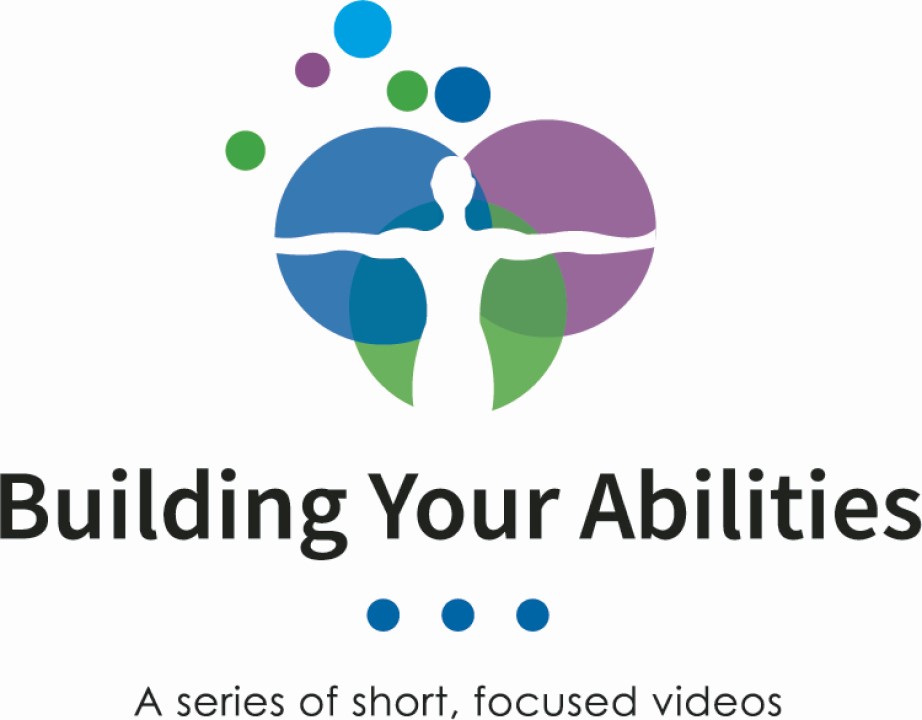Focused Exercise Videos for Parkinson’s
According to Stanford Medicine, “Exercise is an important part of a healthy lifestyle for everyone. When you have Parkinson’s disease (PD) exercise is as important as taking your medications on time, every time. Exercise helps to maintain strength, flexibility, balance, and cognitive acuity so you can continue to do the things you have to do and the things you love to do.” Building Your Abilities are specially designed exercise videos for Parkinson’s.
Watch these videos to get your blood flowing and muscles moving. At times do you feel like you need to move after sitting too long? Or maybe, you would just like to warm up your body before your daily walk. Check out our new Building Your Abilities video series. Each video is around 10 minutes long and focuses on common challenge areas. Use one, two, or all 10 to fit your specific need.
Hand Exercises
Wake up your hands! Maybe you are having problems gripping a pen, fork or other numerous objects. Perhaps you wake up in the morning and your hands don’t want to open up. Increase the dexterity, flexibility and strength in your fingers, palms and wrists with these 4 quick exercises. Try them before you get up in the morning or multiple times a day! You may do this standing or seated.
Three Exercises to Improve Your Coordination
Coordination by definition is “the ability of your arms, legs and other body parts to move in a controlled way”. Coordination exercises can not only help you build muscle, but can increase your daily energy levels, improve your flexibility, enhance concentration AND improve balance. Coordination exercises can also be challenging for a lot of us. Try these three coordination exercises to keep challenging yourself and working to get better!
Getting Up From Your Chair
Learn good technique to get up out of your seat safely using your hands or without your hands. Also practice moving your legs and hips around to get out of your car!
Head to Toe Warmup
Looking for a quick way to get your blood flowing and muscles moving? At times do you feel like you need to move after sitting too long? Or maybe, you would just like to warm up your body before your daily walk. All of the warmup moves can be done seated or standing and will get your body moving from your head and neck to your toes!
Increase Your Flexibility
If you don’t have an hour for a yoga class try this short stretching video. Stretching keeps our muscles flexible, strong and healthy. After a short warm up you will perform stretches for the chest/shoulders, hamstrings/calves, back/shoulders and hips. These exercises can increase your range of motion in your joints and keep your muscles from becoming short and tight. Better flexibility will also help improve performance in your daily activities and decrease your risk of injuries.
Exercising Your Voice
It is never too early or too late to begin to exercise your voice. Just like your body, your voice will stay stronger and more efficient the more it is exercised!
Check out these simple voice exercises you can do at home to maintain or improve your voice. Let people hear ALL that you have to say!
5 Functional Exercises for Daily Activities
Functional movement exercises are exercises that can be done to help you perform activities of everyday living safely and effectively. These exercises mimic the movement of these daily activities. Examples of these everyday activities may be getting in and out of a chair, reaching into a high cabinet, picking something up off of the floor or rolling over in your bed. The five functional movement exercises you will do in this short video will be just what you need to help build your strength, endurance, flexibility and balance…all essential components of ensuring you are performing your everyday activities at their best!
Range of Motion
As we get older our joints become less flexible and our range of motion declines. Even low impact repetitive movement in these joints can make a positive difference. In this video you will work the shoulders, elbows, hips, knees and ankles while strengthening the muscles that support them. This can lead to easier movement that involves twisting, turning, reaching and standing up and down.
Cognitive Challenges
If you are having trouble with poor motor coordination or confusion, stimulating cognitive skills may help. In this video you will practice low impact walking in place while counting up and down. A color challenge is also included which requires strong attention and self regulation. Increase your mental vitality while having some fun at the same time! You may do this standing or seated.
5 Balance Exercises to do at Your Kitchen Counter
Maintaining balance is so important, especially for those with Parkinson’s Disease. Good balance is so helpful for preventing falls, maintaining and improving your ability to walk and a great way for you to improve your confidence in your everyday activities. Try these five balance exercises that can be done at your very own kitchen counter. Work your way to better balance!

